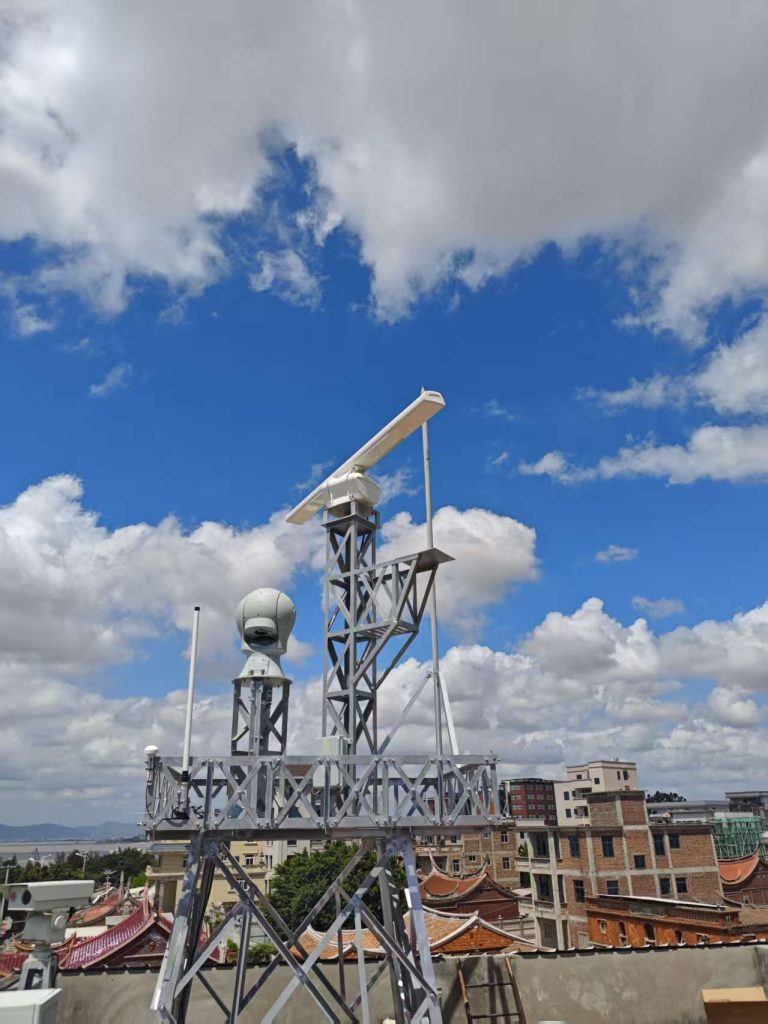Border and coastal defense surveillance is an important barrier for national security, which needs to deal with complex geographical environments and diverse threats. Radar and electro-optical equipment, as core perception means, build an efficient situation awareness network by virtue of their complementary characteristics.
I. Radar: The "Long-Range Alert Barrier" for Border and Coastal Defense
Radar detects targets through electromagnetic waves. Its core advantages lie in long-range coverage and all-weather capabilities, making it the "thousand-mile eye" for border and coastal defense.
Its functions are reflected in three aspects:
The first is wide-area early warning. Shore-based or vehicle-mounted long-range radars can detect targets hundreds of kilometers away, covering borders, near-sea areas and exclusive economic zones. They can capture the movements of ships, aircraft, vehicles, etc. in advance, thus buying time for command and decision-making.
Second, it is on duty around the clock, unaffected by adverse conditions such as heavy rain, thick fog and night, and can work continuously in complex areas such as plateaus, deserts and distant seas to ensure uninterrupted monitoring.
The third is multi-target and low-altitude detection. Modern phased array radars can simultaneously track dozens of targets. They can also make up for the low-altitude/ultra-low-altitude blind spots caused by the curvature of the Earth by raising antennas or using beyond-line-of-sight technology, thus preventing threats such as cruise missiles and low-altitude penetration aircraft.

Ii. Optoelectronic Equipment: The "Precise Identification Tool" for Border and Coastal Defense
Photoelectric equipment (such as visible light cameras and infrared thermal imagers) relies on light radiation for imaging, emphasizing high resolution and concealment, and serves as the "precision monitoring hand" for border and coastal defense.
The main functions include: First, precise identification and confirmation. After the radar detects the target, the photoelectric equipment can clearly display the target's shape, markings and other details, such as identifying the name of the ship and the flag during the day, and capturing the thermal radiation of the power system through the infrared thermal imager at night to determine the target's attributes (civilian/military, normal/abnormal). The second is close-range evidence collection and monitoring. In key areas such as border ports and nearshore ports, high-definition PTZ cameras can zoom in 360 degrees to track and record scenes of smuggling, illegal border crossing and other activities, providing evidence for law enforcement. Thirdly, passive covert reconnaissance does not require the emission of electromagnetic waves, making it suitable for secretly monitoring suspicious targets and avoiding exposing one's own position. It plays a prominent role in special tasks such as border reconnaissance.

Iii. Synergy: Building a three-dimensional Surveillance System
The two work together to form the core process of "radar detection + photoelectric recognition" : the radar locks onto the target's position from a distance, guides the photoelectric equipment to quickly point and form an image, and the command center judges the target's intention based on the image and takes measures such as warning and driving away. This coordination not only leverages Radar's coverage advantage but also makes up for its recognition deficiency. Meanwhile, in bad weather, radar takes the lead in detection and infrared photoelectric assistance in identification. When confronted with electronic interference or stealth targets, photoelectric equipment can serve as a backup measure to enhance the overall anti-interference and anti-stealth capabilities.
In conclusion, radar is the "breadth bearer" of border and coastal defense, ensuring coverage and early warning. Photoelectric devices are the "precision bearers", enabling identification and evidence collection. The two complement each other, providing solid technical support for maintaining the security of border and maritime areas and responding to diverse threats.
Mskyeye has extensive experience in the development and construction of border and coastal defense surveillance radars and electro-optical integration projects, and it also has its own software platform.
Welcome to inquire:
Tel: +86-18056861209 (same number for Wechat)
Email: mskyeye@mskyeye.com.

